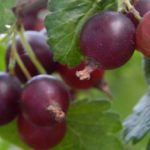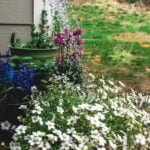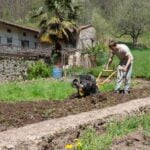Are you curious about the best times of day to water your vegetable container garden? Understanding when to water your plants is crucial for ensuring their health and growth. In this article, we will explore the importance of watering at the right times for successful vegetable container gardening, and provide valuable insights into the factors that affect the best times to water.
Watering plays a vital role in the success of your vegetable container garden. Different vegetables have varying water requirements, and factors such as climate, soil type, and plant species can all influence the best times to water. By understanding these factors, you can effectively meet the watering needs of your container garden and promote optimal growth and productivity.
Throughout this article, we will delve into the benefits and potential drawbacks of watering in the morning, afternoon, and evening. By examining each time of day for watering, you can make informed decisions on when to water your vegetable container garden for maximum benefit. Additionally, we will provide valuable tips and techniques for best practices in watering to help you maintain a healthy and thriving container garden. Stay tuned for expert advice on optimizing your watering schedule.
Understanding the Watering Needs of Vegetable Container Garden
When it comes to vegetable container gardening, it’s crucial to understand the specific water needs of the different vegetables you’re cultivating. Not all plants have the same watering requirements, and understanding these differences is essential for maintaining a healthy and thriving container garden.
For example, leafy greens such as lettuce and spinach require consistently moist soil, while root vegetables like carrots and radishes prefer slightly drier conditions. Tomatoes and peppers thrive with regular watering but may suffer from overwatering, leading to issues like blossom end rot. Understanding these variations in water needs will help you tailor your watering schedule to meet the specific requirements of each plant in your vegetable container garden.
To further illustrate this point, consider the impact of climate on watering needs. In hot and arid climates, container gardens may require more frequent watering, while in cooler or more humid conditions, less frequent watering may be necessary. The type of soil used in containers also plays a role in determining watering needs; sandy soils drain quickly and may require more frequent watering, while clay soils retain moisture longer and necessitate less frequent watering.
In summary, by considering factors such as plant species, climate, and soil type, you can determine the best times of day to water your vegetable container garden to ensure optimal growth and yield. With this knowledge in mind, you can create a customized watering schedule that meets the unique needs of each plant in your container garden.
| Vegetable | Watering Needs |
|---|---|
| Lettuce | Consistently moist soil |
| Carrots | Slightly drier conditions |
| Tomatoes | Regular but not excessive watering |
Factors to Consider
When it comes to ensuring the health and productivity of your vegetable container garden, understanding the best times of day to water is essential. However, determining the ideal watering schedule can be influenced by a variety of factors, including climate, soil type, and plant species.
One important factor to consider is the climate in which you are gardening. In hot and dry climates, such as those found in arid regions, watering in the early morning or late afternoon may be most beneficial.
This timing can help minimize evaporation while still allowing plants to absorb the necessary moisture. On the other hand, in cooler and more humid climates, watering during the warmer parts of the day may be suitable as it allows for better absorption without excessive moisture loss.
The type of soil used in your container garden can also impact the best times for watering. Soil that retains moisture well might not require as frequent watering compared to soil that drains quickly. Understanding your specific soil conditions will allow you to adjust your watering schedule accordingly. Additionally, different plant species have varying water needs and preferences for timing of irrigation. While some vegetables prefer consistent moisture throughout the day, others may benefit from more infrequent but deep waterings.
| Climate | Ideal Watering Time |
|---|---|
| Hot and Dry | Early morning or late afternoon |
| Cooler and Humid | Warmer parts of the day |
Morning Watering
When it comes to vegetable container gardening, watering at the right time is crucial for the health and success of your plants. One of the best times of day to water vegetable container gardening is in the morning. This is because the cooler morning temperatures result in reduced evaporation, allowing the water to penetrate the soil and be absorbed by the roots more effectively.
Reduced Evaporation
Watering in the morning helps to minimize evaporation, which can be particularly beneficial during hot summer months. When you water later in the day, especially in the afternoon, there is a higher chance of losing water to evaporation before it can reach plant roots. By watering in the morning, you are giving your plants a better opportunity to make use of the moisture provided.
Better Absorption
Additionally, watering in the morning allows for better absorption of water by plant roots. As temperatures rise during the day, plants naturally start using up their reserves of water for growth and photosynthesis. By providing a good soak in the morning, you ensure that your plants have access to ample moisture as they go through their daily processes.
Afternoon Watering
When it comes to vegetable container gardening, timing is everything – especially when it comes to watering. While morning watering is often touted as the best practice, there are times when afternoon watering may be necessary or even beneficial. Understanding the potential drawbacks and benefits of afternoon watering, as well as when it might be necessary, can help ensure the success of your container garden.
One potential benefit of afternoon watering is that it allows plants to replenish any moisture lost during the heat of the day. Additionally, if your plants show signs of wilting or stress in the afternoon, providing them with a drink at this time can help perk them up and prevent damage. However, it’s important to strike a balance as there are also potential drawbacks to afternoon watering.
One drawback of afternoon watering is that water may evaporate more quickly in the heat, meaning less water reaches the roots of your plants. This can be especially problematic for shallow-rooted vegetables such as lettuce and herbs.
Additionally, wet foliage in the evening can create a humid environment that promotes disease, so it’s important to avoid overhead watering whenever possible. Consider these factors when deciding whether to water your vegetable container garden in the afternoon and adjust your approach accordingly to meet the specific needs of your plants.
– When considering whether or not to water in the afternoon, it’s important to assess specific factors such as climate, soil type, and plant species. Here are some key considerations:
- Climate: In hotter climates with intense sunlight and high temperatures, afternoon watering may be necessary to prevent plants from becoming stressed or wilting.
- Soil Type: Different types of soil have varying capabilities for holding onto moisture. If you have well-draining soil that dries out quickly, an extra round of afternoon watering may be beneficial for your container garden.
- Plant Species: Some vegetables may have higher water requirements than others or may be more resilient to midday heat. Take into account the specific needs of each plant before deciding on an afternoon watering regimen for your vegetable container garden.
– Keep in mind that while there are potential benefits and drawbacks to afternoon watering, no one-size-fits-all approach applies across all container gardens. It’s essential to observe your plants’ behavior and adjust your watering schedule accordingly based on their individual needs and environmental conditions.
Evening Watering
When it comes to watering a vegetable container garden, the timing of your watering sessions can play a crucial role in determining the overall health and wellbeing of your plants. While morning and afternoon watering each have their own set of advantages and drawbacks, evening watering is an option that some gardeners consider as well. In this section, we will explore the risks and benefits of watering in the evening, including the potential for disease and the convenience factor.
Potential Risks
Watering in the evening can create a favorable environment for certain plant diseases to thrive. The lingering moisture on plant leaves during cooler nighttime temperatures can promote the growth of fungal diseases such as powdery mildew and leaf spot. Additionally, if plants remain wet through the night, they may become more susceptible to slugs and snails, which are attracted to moist environments. In regions with high humidity levels, evening watering may exacerbate these issues even further.
Potential Benefits
One potential benefit of evening watering is its convenience factor. For many individuals with busy schedules, tending to their container garden in the evening may be more feasible than in the morning or afternoon. Furthermore, watering in the evening allows plants to absorb moisture throughout the night when temperatures are lower, potentially reducing water loss due to evaporation during peak daytime temperatures. This can be particularly advantageous during hot summer months where water conservation is important.
Overall, while there are potential risks associated with evening watering, it can still be a viable option for some vegetable container gardens depending on various factors such as climate and plant species. When considering whether to water in the evening, it’s essential to weigh these risks against its convenience factor and make an informed decision based on your individual gardening needs and circumstances.
Best Practices for Watering
Watering is crucial for the success of vegetable container gardening, and understanding the best practices for watering can make a significant impact on the health and yield of your vegetables. Here are some tips and techniques to ensure proper watering in your vegetable container garden:
- Use the right amount of water: Different vegetables have varying water needs, so it’s essential to understand the specific requirements of each plant. Some vegetables may need more frequent watering, while others may require less. It’s important to research the water needs of the vegetables you are growing and adjust your watering schedule accordingly.
- Avoid overhead watering: Watering from above can lead to moisture-related issues such as fungal diseases and water splashing onto the foliage, which can promote the spread of disease. Instead, consider using methods such as drip irrigation or soaker hoses to deliver water directly to the soil at the base of your plants.
- Monitor soil moisture: Keep an eye on the moisture levels in your container garden’s soil. Stick your finger into the soil to assess its moisture level – if it feels dry about an inch below the surface, it’s time to water. Additionally, investing in a moisture meter can help provide an accurate reading of soil moisture levels.
By following these best practices for watering, you can help ensure that your vegetable container garden receives adequate moisture without increasing the risk of disease or other issues associated with improper watering techniques. With careful attention to watering, you can support healthy plant growth and maximize your vegetable harvest.
Conclusion
In summary, the best times of day to water vegetable container gardening can greatly impact the success of your garden. By understanding the different watering needs of various vegetables, considering factors such as climate and soil type, and implementing best practices for watering, you can ensure healthy and thriving plants.
Morning watering is generally the best option, as it reduces evaporation and allows for better absorption, while afternoon watering may be necessary in certain circumstances. Evening watering should be approached with caution due to the potential for disease, but it can be convenient for those with busy schedules.
Ultimately, the key takeaway for readers is to pay close attention to the specific needs of their vegetable container garden and to adjust their watering schedule accordingly. It’s important to monitor moisture levels in the soil, observe how your plants respond to different watering times, and make adjustments as needed. By taking these factors into consideration and providing proper care through timely watering, you can enjoy a bountiful harvest from your vegetable container garden.
With these considerations in mind and armed with knowledge about the best times to water your vegetable container garden, you can confidently nurture your plants towards success. Here’s to a flourishing container garden filled with vibrant and healthy vegetables.
Frequently Asked Questions
Is It Better to Water Vegetable Gardens in the Morning or Evening?
It is generally better to water vegetable gardens in the morning rather than the evening. This helps prevent the risk of fungal diseases that can develop from plants staying wet overnight.
How Often Should You Water Vegetable Plants in Containers?
The frequency of watering vegetable plants in containers depends on various factors such as the type of plant, weather conditions, and the size of the container. Generally, it’s best to check the soil moisture regularly and water when the top inch of soil feels dry.
Is It Better to Water Potted Plants in the Morning or Evening?
Similar to watering vegetable gardens, it is usually recommended to water potted plants in the morning rather than the evening. This allows excess moisture to evaporate during the day and reduces the risk of plant diseases caused by damp conditions during cooler evenings.

If you’re looking to get into vegetable gardening, or are just looking for some tips on how to make your current garden better, then you’ve come to the right place! My name is Ethel and I have been gardening for years. In this blog, I’m going to share with you some of my best tips on how to create a successful vegetable garden.





